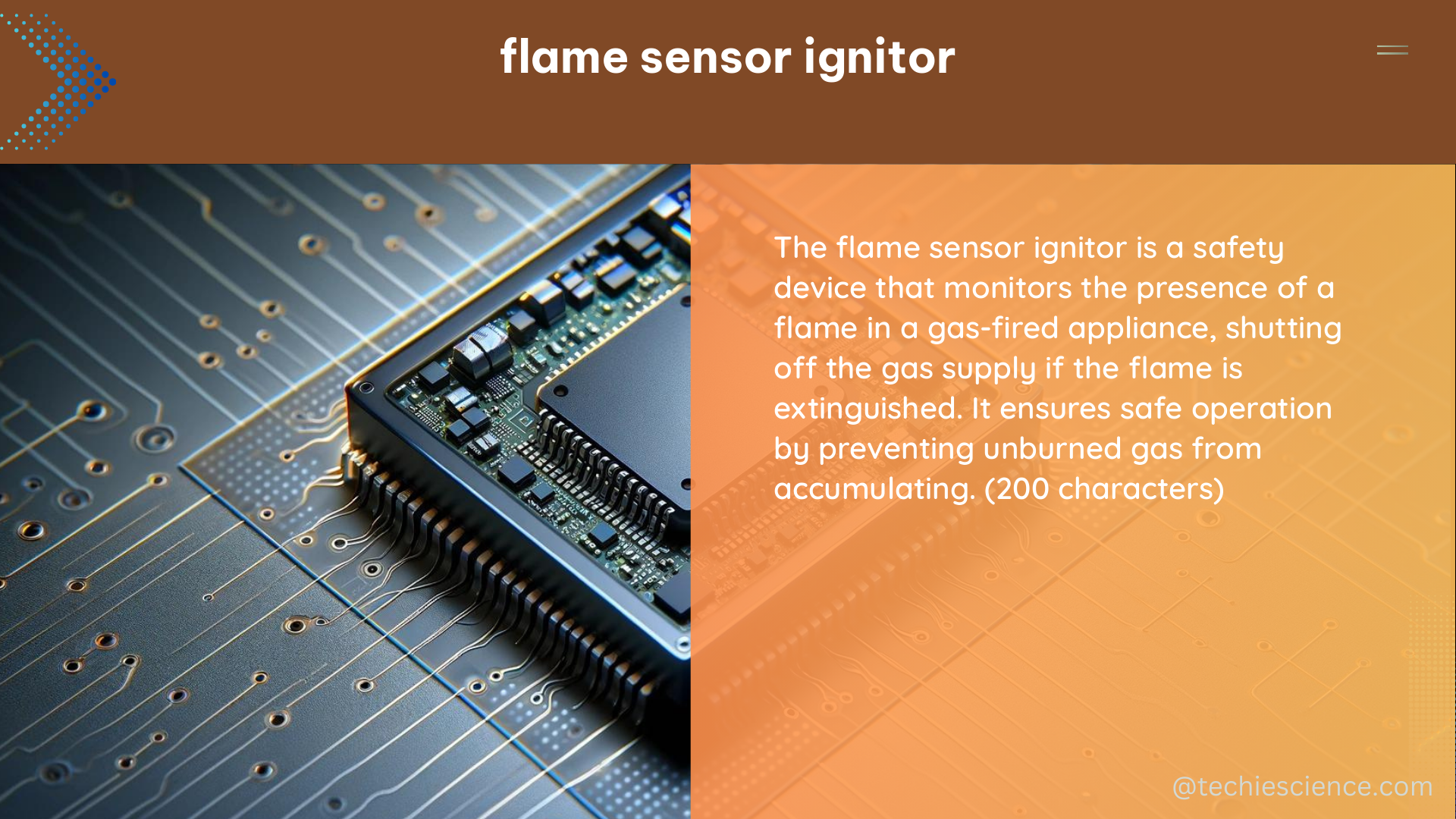The flame sensor ignitor is a critical component in various heating systems, including furnaces, boilers, and water heaters, that rely on flames for heating purposes. It is responsible for detecting the presence of a flame and ensuring the safe operation of the system. The flame sensor ignitor works on the principle of flame rectification, where a small voltage is sent through the pilot electrode, and the flame acts as a conductor, completing the circuit.
Understanding the Technical Specifications of a Flame Sensor Ignitor
The technical specifications of a flame sensor ignitor can vary depending on the manufacturer and the specific application. However, some common specifications include:
Resistance
The resistance of the flame sensor ignitor can range from a few ohms to several kilohms. This resistance can change depending on the temperature of the flame, allowing the sensor to detect the presence or absence of the flame. For example, a typical flame sensor ignitor may have a resistance range of 5 to 20 kΩ when the flame is present, and a resistance of over 1 MΩ when the flame is absent.
Current
The flame sensor ignitor typically operates on microampere currents, usually between 0.5 and 10 μA. This current is used to detect the presence of the flame and complete the circuit. The specific current range can vary depending on the manufacturer, but a common range is 1 to 5 μA when the flame is present, and less than 0.5 μA when the flame is absent.
Voltage
The voltage applied to the flame sensor ignitor can vary, but it is typically in the range of 24VDC. This voltage is used to create the small current that flows through the flame sensor ignitor. Some systems may use a higher voltage, such as 120VAC, but the flame sensor ignitor will have a voltage-dropping resistor or transformer to step down the voltage to the appropriate level.
Response Time
The response time of the flame sensor ignitor is the time it takes for the sensor to detect the presence or absence of the flame. This time can vary depending on the specific application and the manufacturer’s specifications. A typical response time for a flame sensor ignitor may be in the range of 0.5 to 2 seconds, but some high-performance sensors may have a response time as low as 0.1 seconds.
Operating Temperature
The flame sensor ignitor has a specific operating temperature range, typically between -40°C and 125°C. This range ensures that the sensor can operate safely and accurately in various environments, from cold outdoor installations to hot furnace or boiler applications.
DIY Installation and Testing of a Flame Sensor Ignitor

DIY installation and testing of a flame sensor ignitor can be done using specific tools and techniques. Here are some steps you can follow:
-
Multimeter Measurements: Use a multimeter to measure the resistance and current of the flame sensor ignitor. With the flame present, the resistance should be in the range of 5 to 20 kΩ, and the current should be between 1 to 5 μA. With the flame absent, the resistance should be over 1 MΩ, and the current should be less than 0.5 μA.
-
DPDT Switch Testing: Use a DPDT (Double Pole, Double Throw) switch to measure the current flowing through the flame sensor ignitor and detect the presence or absence of the flame. Connect the switch in series with the flame sensor ignitor and the control circuit. When the flame is present, the current should flow through the switch, and when the flame is absent, the current should be interrupted.
-
Voltage Measurement: Measure the voltage applied to the flame sensor ignitor, which should be in the range of 24VDC. Ensure that the voltage is within the specified range for the particular flame sensor ignitor you are working with.
-
Response Time Evaluation: Observe the response time of the flame sensor ignitor by quickly turning the flame on and off and measuring the time it takes for the sensor to detect the change. This can be done using a stopwatch or a digital oscilloscope.
-
Temperature Testing: If possible, test the flame sensor ignitor at different temperatures within the specified operating range to ensure it is functioning correctly across the entire temperature spectrum.
By following these steps, you can effectively test and troubleshoot the flame sensor ignitor in your heating system, ensuring its safe and reliable operation.
Conclusion
The flame sensor ignitor is a critical component in various heating systems, and its technical specifications are essential for safe and efficient operation. By understanding the key specifications, such as resistance, current, voltage, response time, and operating temperature, you can effectively install, test, and troubleshoot the flame sensor ignitor in your DIY projects. Remember to always follow the manufacturer’s instructions and safety guidelines when working with heating systems to ensure your personal safety and the proper functioning of the equipment.
References:
– How can ignition probe act as flame sensor?
– How to test flame sensing HSI sensor
– Flame sensor ignitor patent

The lambdageeks.com Core SME Team is a group of experienced subject matter experts from diverse scientific and technical fields including Physics, Chemistry, Technology,Electronics & Electrical Engineering, Automotive, Mechanical Engineering. Our team collaborates to create high-quality, well-researched articles on a wide range of science and technology topics for the lambdageeks.com website.
All Our Senior SME are having more than 7 Years of experience in the respective fields . They are either Working Industry Professionals or assocaited With different Universities. Refer Our Authors Page to get to know About our Core SMEs.